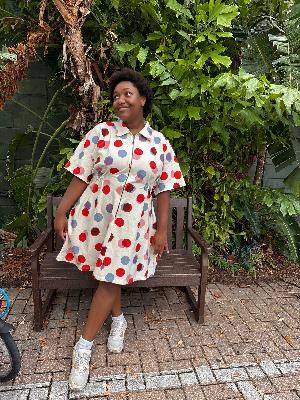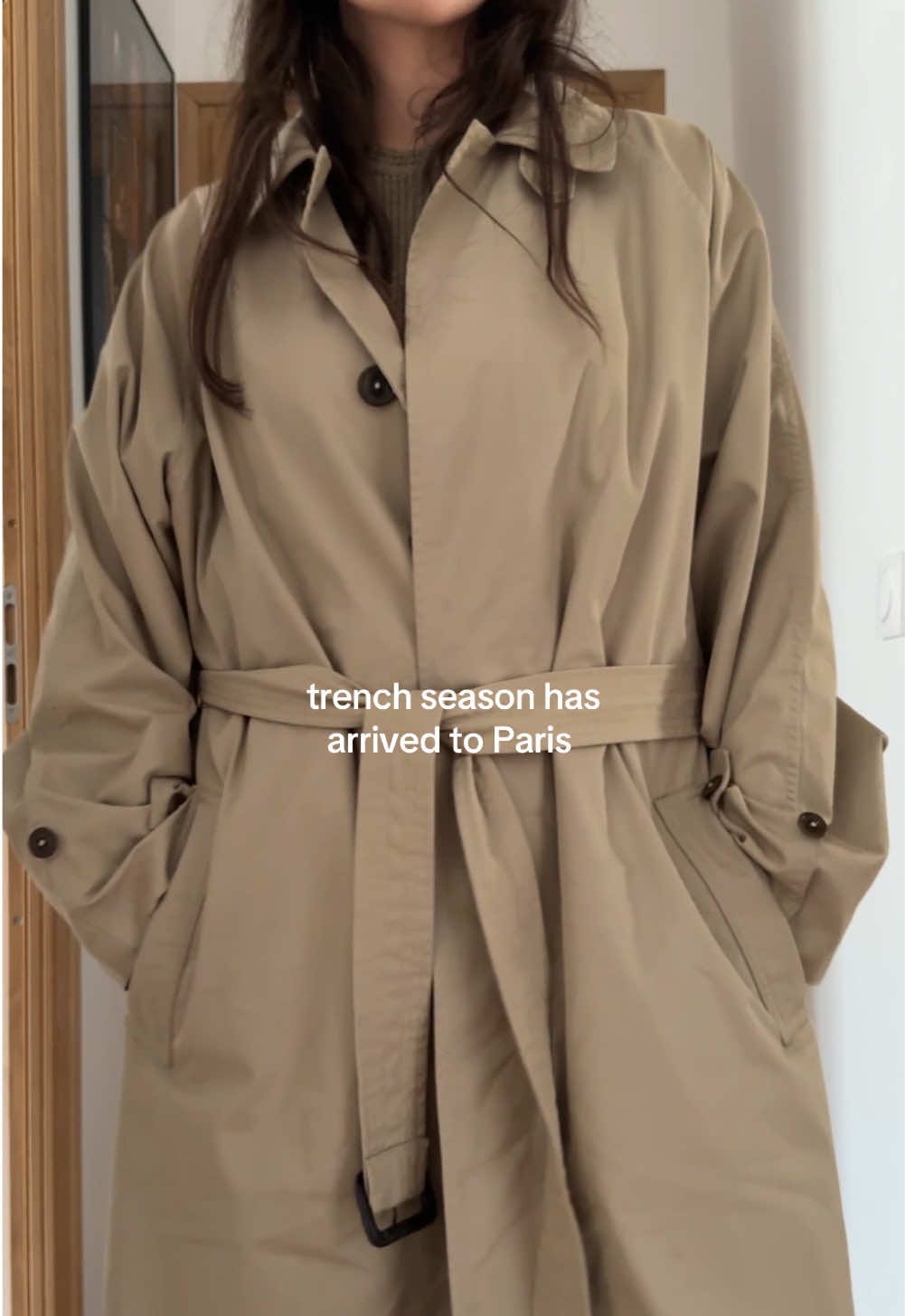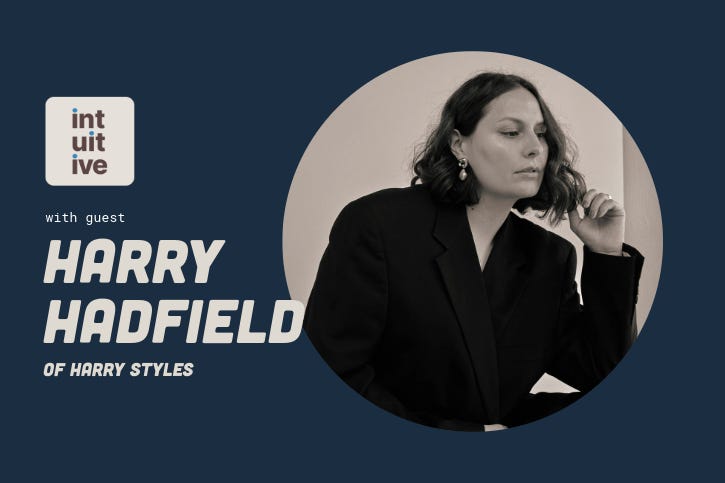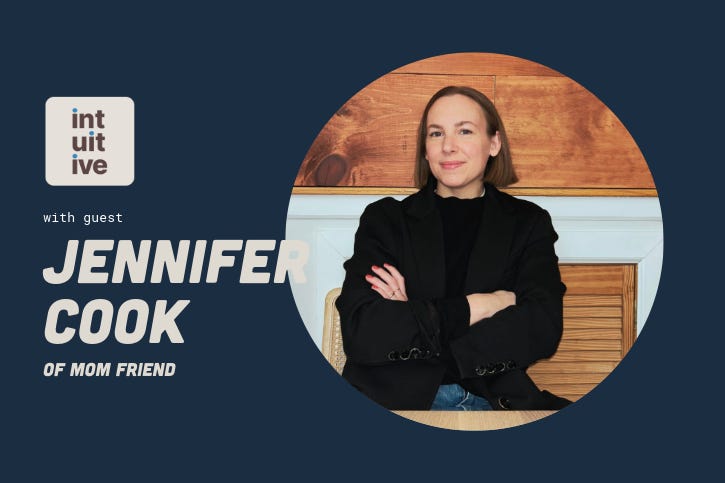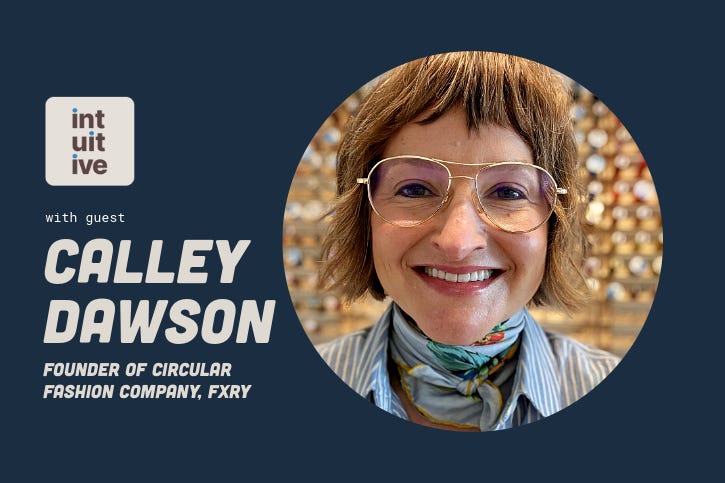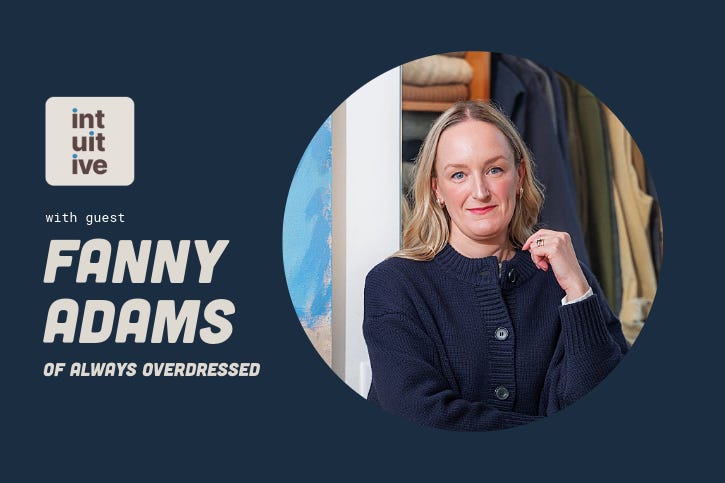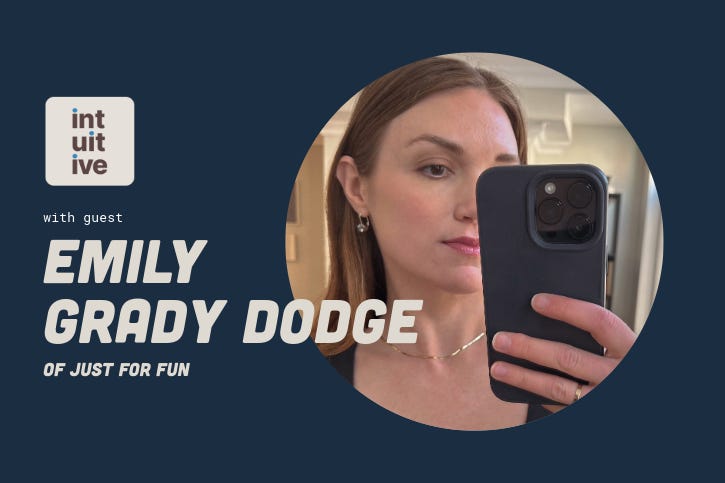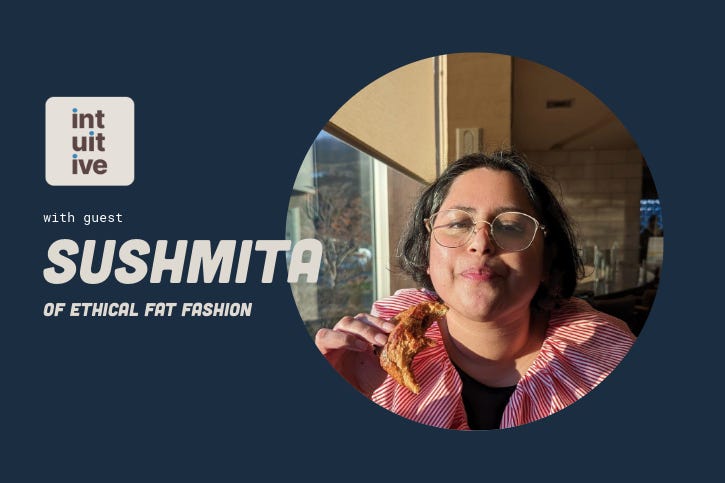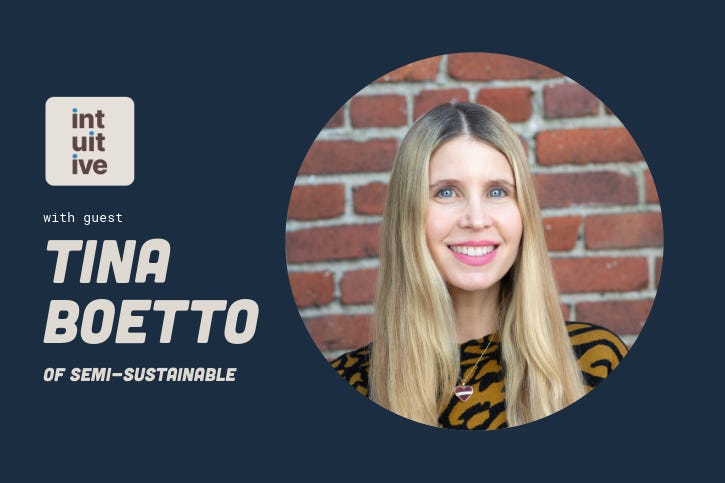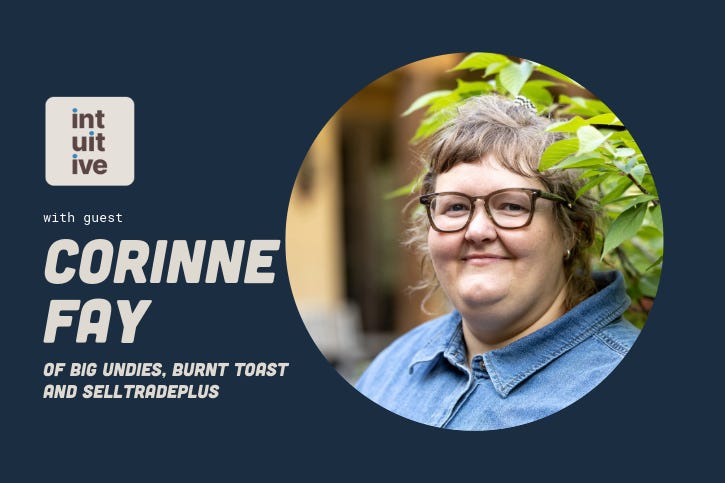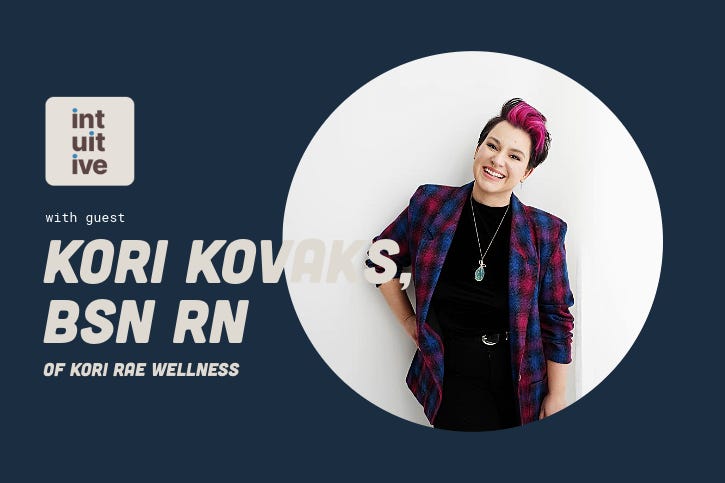Episode 09: Trusting our own preferences, with Rachel Margaret
Description
Today's guest is Rachel Margaret, a personal style and beauty YouTuber. She’s known for her humor, great style, and ability to eloquently tackle complex style challenges like, can we experience contentment with our wardrobes? She also loves thrifting, and playing with color. Yep, you’re gonna love her. Enjoy!
Episode Transcript
This transcript has been edited for clarity.
You're listening to Intuitive Style, where we believe everyone has style. Through conversations with inspiring guests, we explore how to tune into our style intuition so that we can dress authentically and live fully.
Maureen
Welcome to the podcast! I have been a really big fan of your YouTube channel, Rachel, Margaret, for a while now. I just heard that you started only a year ago.
Rachel
Yeah. January, February of last year. Yeah.
Maureen
Wow. So can you share a little bit about what your channel is about and how you got started?
Rachel
Well, I think I've always wanted to do something like that, at least since I became an adult, I wanted to do something creative. But I'm a perfectionist, and I've always kind of held myself back. And so about a year ago, I just uploaded a Project Pan video, because I knew if I overthought it, I was just not going to do it. So I just uploaded a Project Pan, and I've been kind of trying to just be consistent and do it ever since.
And it's slowly evolved over time. Now, I would say that it's mainly about developing a relationship with consumerism and style that flows from a place of contentment and joy.
And I really struggled with compulsive shopping in my own life. And I also thought it might just be helpful for me to share my own thoughts for me really, and then also hopefully, for other people too.
Maureen
Yeah, absolutely. All of that really comes through in your videos, this idea of contentment. And I think it's such a positive way to deal with what can be a tricky subject which is like, struggling with overconsumption. To that point, I think it can be kind of hard to discern when we're shopping the right amount, or when we're shopping too much, according to like, maybe our own preferences. For you personally, what did shopping compulsively feel like? How did you know that was something you wanted to address.
Rachel
Yeah, it is a fine line to walk. I think it can be really hard to know what health looks like in so many areas of our life. But you know, in shopping with shopping in particular. I think for me, a really good gauge of the healthiness of a particular action is my ability to pick up or put down that action as I please. Or I guess, to use a different analogy, you'd like to turn up or turn down the dial. I guess, just to clarify. I've never been diagnosed with a shopping addiction or compulsive shopping, or anything like that, because I think that the behaviors exist on a spectrum, and I'm sure that there are people who deal with it much more severely than I do.
I think for me, a really good gauge of the healthiness of a particular action is my ability to pick up or put down that action as I please. Or to use a different analogy, you'd like to turn up or turn down the dial.
Personally, I began to clock my relationship with shopping as compulsive when I would be shopping for some normal reason, and you know I had the dial turned up a little bit and I would recognize, okay, it's enough now, and I would go to turn the dial down, and I would be unable to and it was kind of like I was thinking about this last night as I was falling asleep, but it's kind of like being caught in an undertow in the ocean, in a rip current. Has that ever happened to you?
Maureen
Thankfully, no.
Rachel
It's happened to me, and it can be really scary. It's such a strong current. And I think what they'll teach you. If you get caught in an undertow is to try and swim direct. Well, don't try actually to swim directly into shore, because if you do, you'll get worn out, the undertow will be stronger than you. Instead, swim parallel to the shore until you get out of the rip current, and then you can swim back. So it's kind of like that for me when I'm in. I call it like a shopping spiral like any episode. I'm able to sense that the action is compulsive or distinct from regular shopping behaviors, because I'm no longer just swimming in the ocean. There's like another force outside of my own logic, my own discernment, my willpower. and it's acting upon me, and it's pulling me out to sea, preventing me or making it much harder for me to do what I would like to do, which is to swim back to shore. So that's kind of what it feels like, and that's what I'm working on, which is just keeping my hand on the dial, and making sure that I'm connected enough with myself to be able to turn the dial up or down as I see fit.
Maureen
I mean, you have such a beautiful way of speaking. And what a great analogy this idea of the rip current. It's such a great way of thinking about it, because to your point, it's not about putting a label on, or some sort of diagnosis. Because I think that can be, you know, very overwhelming. It can be overly medical. It really takes you out of your own experience in your own, of what you're like, what you're feeling and what you're struggling with.
And so almost, I think it's so important to to teach ourselves what our threshold for compulsive behavior looks like, because it may be, you know, compulsive behavior for one person is like potentially much smaller in comparison to someone else. But that doesn't mean that it still doesn't feel out of sync. We all have our own threshold. So I think that's the main reason I wanted to ask you is like, how how can we learn what that feels like for us? And I mean just what a what a great answer. And also some ocean-safe swimming advice. I didn't have that on my Bingo card, but great reminder for the upcoming summer season!
At the end of last year, at the end of 2024, you shared a really authentic raw video about only keeping your favorite clothes. And what that taught you. You start that video with, “In the past, I wouldn't have said that I was very self-critical, or that I didn't trust myself, but I have a closet full of other people's opinions and preferences that proves otherwise,” for anyone who hasn't had a chance to watch that video yet, can you share how you came to this realization?
Rachel
Yeah, absolutely. I well, I feel like I've come to this realization in the past. I've learned. you know, it was so many of the things that we need to learn in life. We learn it. I learned it then, and then I've had to learn it again and again and again, and each time you learn it it gets deeper and deeper and more settled within you, and it actually starts to become a part of you. So it's not just something that's in your head, but it's something that you really believe and act out of.
Just for context, a few months ago, I stumbled across this really beautiful wooden wardrobe, and while I was out thrifting, and it, it led to this whole series of epiphanies and realizations, and one of those. One of those realizations was just a desire for fewer things, I think, or for, like a more curated selection of things, my favorite things. And I've known that on some level I've recognized that desire within myself, but I've struggled to implement it like there's always reasons to have more to keep that shirt or that pair of pants just in case right like. Or I gain weight, or I get invited to this very specific kind of event. You know, it's like you can always find a reason to keep the maybe items, even though they're just so-so. But there was something about seeing that wardrobe that day, and having this vision before me of a life in a closet that included only my favorite things. and it really gave me an impetus, I guess, to like shed that outer layer that I've always held on to and so, as I was decluttering this most recent time, and I guess also in previous declutters, but I could really see the parts of my wardrobe that were not reflective at all of my own preferences and desires, but of someone else's. and this might be embarrassing to admit, but for many items in my closet. I could actually tell you like, Oh, yeah, I purchased that when I was following so and so, or I got that when I was binging her videos, and it just became exceedingly clear that I was in a habit of seeking legitimacy for my style by copying the style of others.
And I think that that is very normal. It's really natural, you know, and a lot of ways subconscious like when you're 1st starting out finding your style. It's hard to know where to begin, and and it makes sense that you would start by copying what you see. It's like trying something on like a persona or a silhouette or a color palette. You have to trial and error those things. But I mean, yeah, experimentation is necessary. It's necessary to learn ourselves and develop our preferences. It's just that for me. I think that experimentation began to flow solely from and style opinions of other people. And yeah, I just kind of used that realization to trace the line back and to see what was true. Which is that I didn't seem to trust myself. I didn't consider my style preferences as legitimate enough to be the source of my experimentation and my purchasing, and that's why and how I came to that conclusion.
I didn't consider my style preferences as legitimate enough to be the source of my experimentation and my purchasing.
Maureen
That’s so powerful. This idea of you know, we're delegitimizing our own preferences. And I say we, b

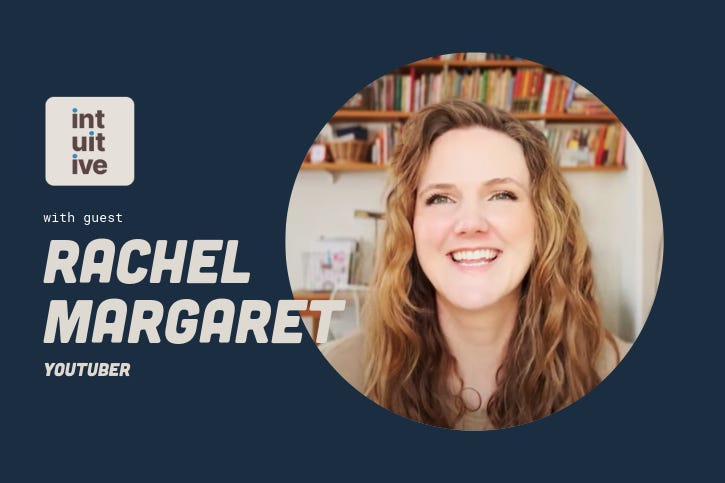
![Episode 24. Rambling in [Intuitive] Style, with Traci Landy Episode 24. Rambling in [Intuitive] Style, with Traci Landy](https://substackcdn.com/feed/podcast/2669400/post/177614968/9bbc5a3f73fab5e46b0a064fb5bff6b4.jpg)
